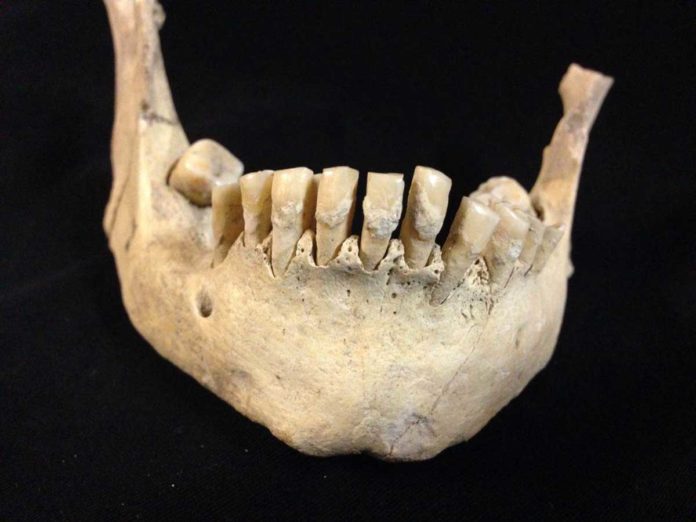There has long been debate over the origins of dairy consumption within European populations. While it was recently expected that lactase persistence (LP) was under positive selection following the advent of agriculture, recent genetic studies of prehistoric human remains have revealed LP may have only emerged in Europe in the last 4,000 years.
In a new study, scientists have discovered the earliest direct evidence of milk consumption anywhere in the world in the teeth of prehistoric British farmers.
Scientists identified a milk protein called beta-lactoglobulin (BLG) buried in the mineralized dental plaque of seven individuals who lived in the Neolithic period around 6,000 years. The plaque samples were the oldest to be analyzed for ancient proteins to date globally.
The Neolithic period in Britain ran from 4,000 to 2,400 cal. BC saw the emergence of farming, with the use of domesticated animals such as cows, sheep, pigs, and goats, alongside crops such as wheat and barley. Archaeologists have also discovered evidence of complex cultural practices, with Neolithic communities building large monumental and burial sites.
The human remains used in the study were from three different Neolithic sites—Hambledon Hill and Hazleton North in the south of England and Banbury Lane in the East Midlands. All three sites show the presence of milk proteins from cows, sheep, or goats, suggesting people were exploiting multiple species for dairy products.
Scientists analyzed dental plaque as it offers insights into the diets of ancient people because dietary proteins are entrapped within it.
Lead author of the study, Dr. Sophy Charlton, from the Department of Archaeology at the University of York, said: “The fact that we found this protein in the dental calculus of individuals from three different Neolithic sites may suggest that dairy consumption was a widespread dietary practice in the past.
“It would be a fascinating avenue for further research to look at more individuals and see if we can determine whether there are any patterns as to who was consuming milk in the archaeological past—perhaps the number of dairy products consumed or the animals utilized varied along the lines of sex, gender, age or social standing.”
Scientists noted, “The discovery of milk proteins is particularly interesting as recent genetic studies suggest that people who lived at this time could not yet digest the lactose in milk. To get around this, the ancient farmers may have been drinking just small amounts of milk or processing it into other foodstuffs such as cheese (which removes most of the lactose).”
Dr. Charlton added: “Because drinking any more than tiny amounts of milk would have made people from this period quite ill, these early farmers may have been processing milk, perhaps into foodstuffs such as cheese, to reduce its lactose content.”
“Identifying more ancient individuals with evidence of BLG in the future may provide further insights into milk consumption and processing in the past and increase our understanding of how genetics and culture have interacted to produce lactase persistence.”
